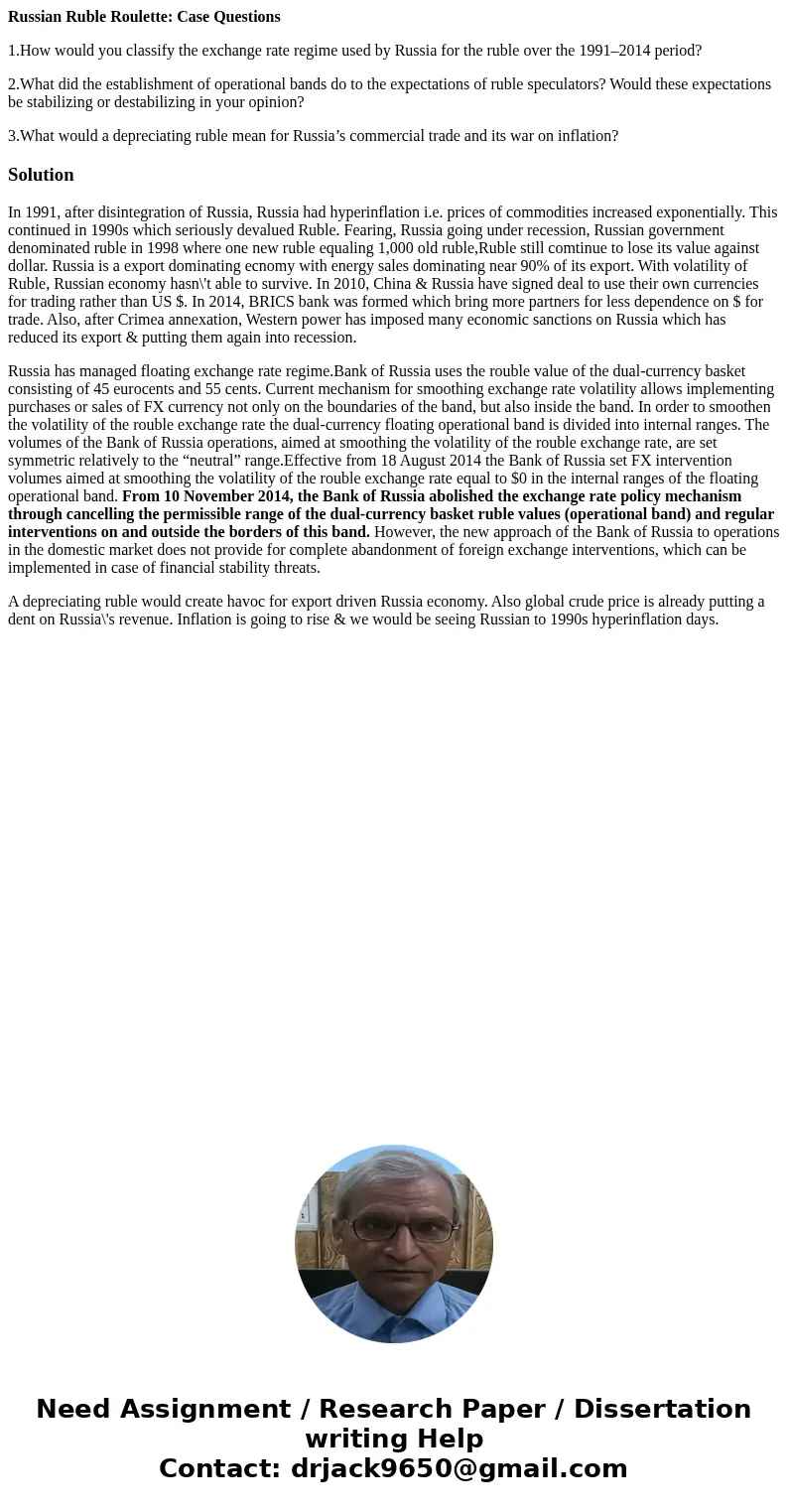Russian Ruble Roulette Case Questions 1How would you classif
Russian Ruble Roulette: Case Questions
1.How would you classify the exchange rate regime used by Russia for the ruble over the 1991–2014 period?
2.What did the establishment of operational bands do to the expectations of ruble speculators? Would these expectations be stabilizing or destabilizing in your opinion?
3.What would a depreciating ruble mean for Russia’s commercial trade and its war on inflation?
Solution
In 1991, after disintegration of Russia, Russia had hyperinflation i.e. prices of commodities increased exponentially. This continued in 1990s which seriously devalued Ruble. Fearing, Russia going under recession, Russian government denominated ruble in 1998 where one new ruble equaling 1,000 old ruble,Ruble still comtinue to lose its value against dollar. Russia is a export dominating ecnomy with energy sales dominating near 90% of its export. With volatility of Ruble, Russian economy hasn\'t able to survive. In 2010, China & Russia have signed deal to use their own currencies for trading rather than US $. In 2014, BRICS bank was formed which bring more partners for less dependence on $ for trade. Also, after Crimea annexation, Western power has imposed many economic sanctions on Russia which has reduced its export & putting them again into recession.
Russia has managed floating exchange rate regime.Bank of Russia uses the rouble value of the dual-currency basket consisting of 45 eurocents and 55 cents. Current mechanism for smoothing exchange rate volatility allows implementing purchases or sales of FX currency not only on the boundaries of the band, but also inside the band. In order to smoothen the volatility of the rouble exchange rate the dual-currency floating operational band is divided into internal ranges. The volumes of the Bank of Russia operations, aimed at smoothing the volatility of the rouble exchange rate, are set symmetric relatively to the “neutral” range.Effective from 18 August 2014 the Bank of Russia set FX intervention volumes aimed at smoothing the volatility of the rouble exchange rate equal to $0 in the internal ranges of the floating operational band. From 10 November 2014, the Bank of Russia abolished the exchange rate policy mechanism through cancelling the permissible range of the dual-currency basket ruble values (operational band) and regular interventions on and outside the borders of this band. However, the new approach of the Bank of Russia to operations in the domestic market does not provide for complete abandonment of foreign exchange interventions, which can be implemented in case of financial stability threats.
A depreciating ruble would create havoc for export driven Russia economy. Also global crude price is already putting a dent on Russia\'s revenue. Inflation is going to rise & we would be seeing Russian to 1990s hyperinflation days.

 Homework Sourse
Homework Sourse